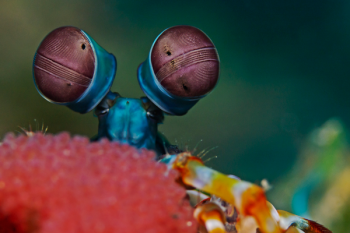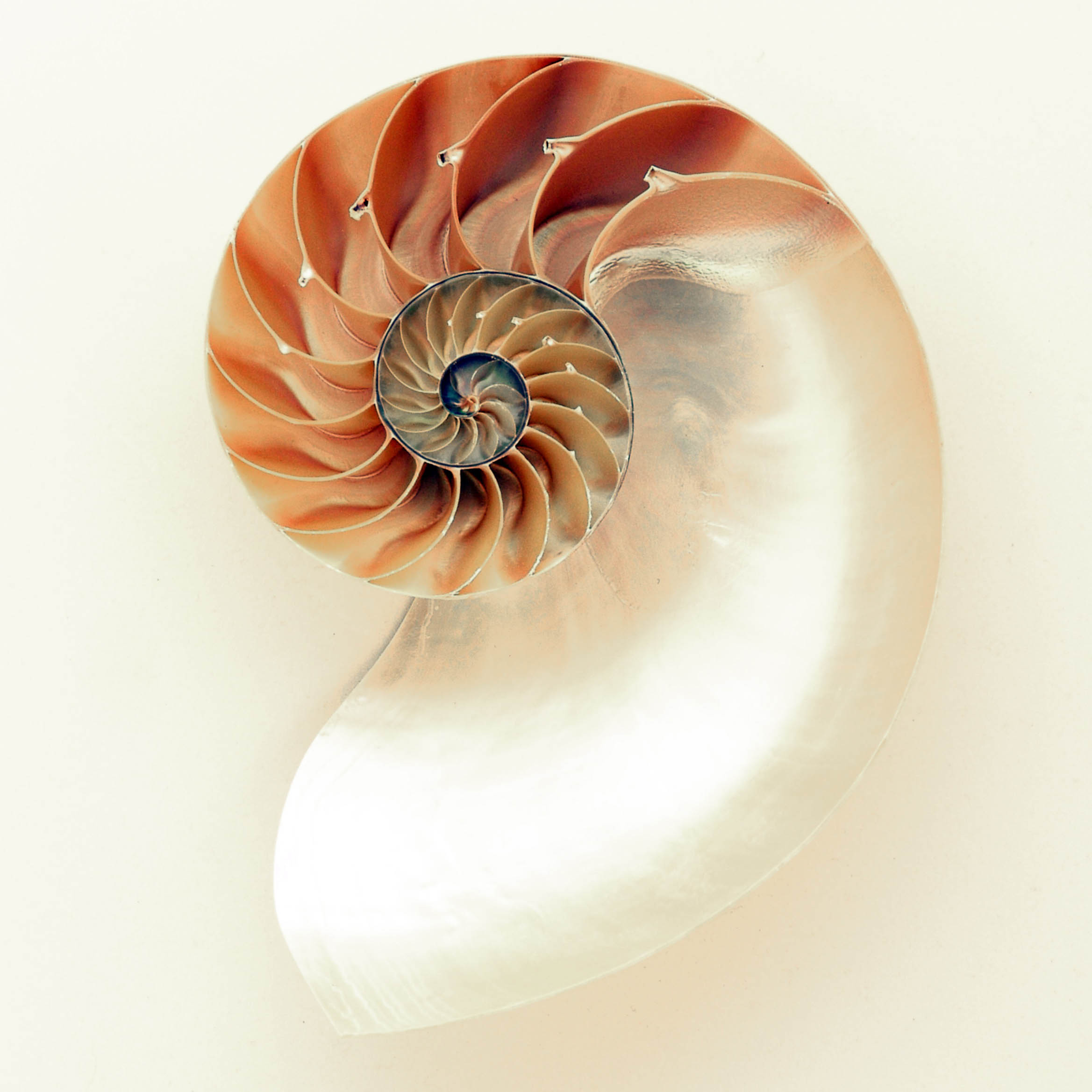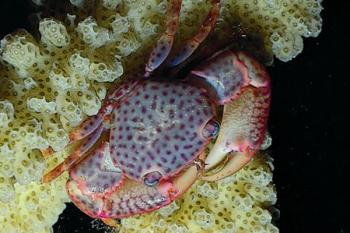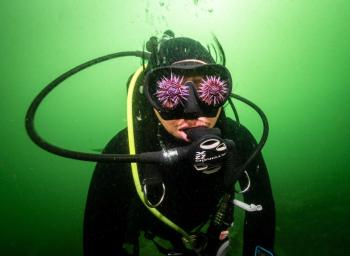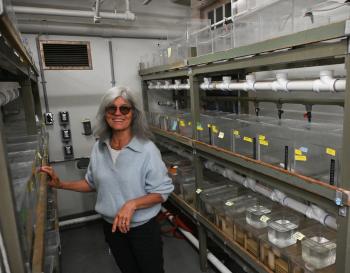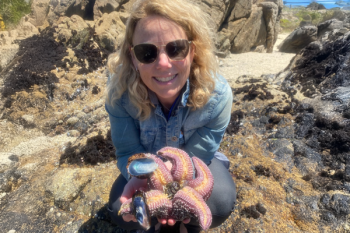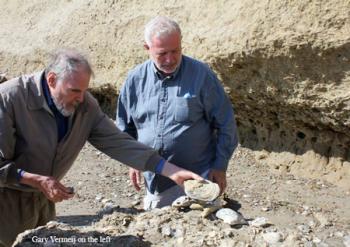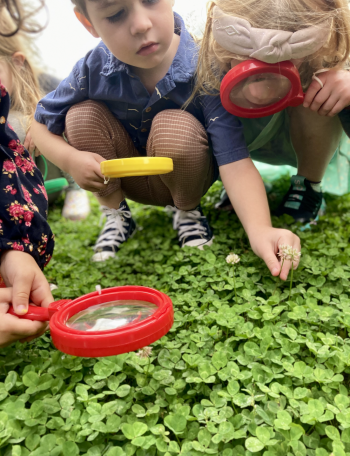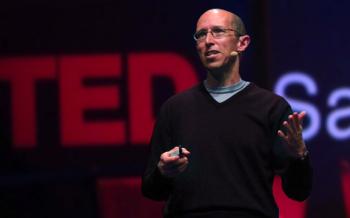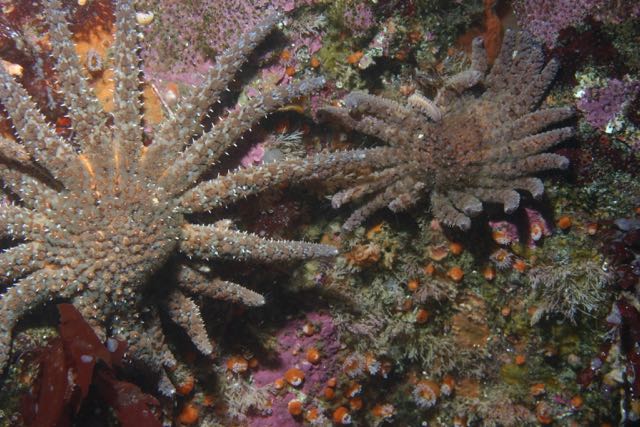
We wrote about sea star wasting disease (SSWD) when scientists were first trying to find the cause of this disease that had decimated sea star populations all along the west coast. One species, the sunflower star (Pycnopodia helianthoides), was particularly hard hit: between 2017 and 2020 scientists estimated that over five billion sunflower sea stars died of SSWD. Scientists estimated that there was a 99-to-100 percent decline of sunflower stars in the coastal waters from Baja, to California, Oregon, and Washington. From the Salish Sea to the Gulf of Alaska declines were greater than 87 percent.
More than 10 years–and many theories later—researchers have found the culprit. In August 2025 a peer-reviewed paper identified the pathogen as Vibrio pectenicida, a saltwater-loving bacteria. This was big news in the ocean science world as well as to those who love the intertidal and kelp forests.
Vibrio bacteria are notorious disease-causing agents. Infection with Vibrio bacteria can cause two types of illness: cholera and vibriosis. People can get vibriosis by eating raw seafood, particularly oysters, or by exposing an open wound to coastal waters. Scientists know that in the ocean these organisms are more deadly and spread more quickly when the ocean warms. “It’s no wonder that scientists have even taken to calling the Vibrio genus a “microbial barometer” of climate change
There are still many questions about SSWD. The wasting predated “The Blob” – a huge pool of unusually warm water – that appeared off the west coast in 2014-2015.” Evidence shows that warmer temperatures increase disease severity, but it is not clear whether the outbreak was triggered by a warming climate.
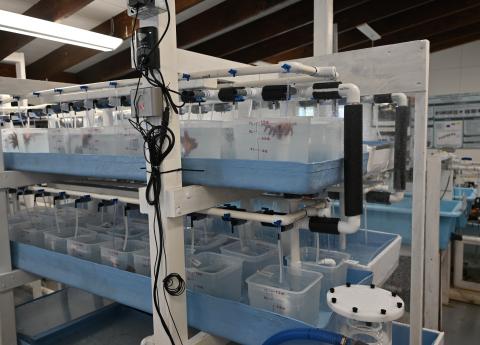
Now what?
Now that scientists know the cause of the disease that wiped out the sunflower star and other sea stars, can scientists restore their populations?
A major part of the solution is to expand captive rearing. “Captive rearing provides two benefits to the recovery of sunflower sea stars by 1) providing a scientific platform to research the basic biology, life history, environmental requirements, and disease dynamics for the species to
inform population monitoring and recovery goals and thresholds; and 2) the ability to maintain the genetic stock and diversity of the species and produce large numbers of individuals to recover populations that have been wiped out or suffered dramatic declines.”
The raising of sunflower stars has begun. Our Featured Scientist runs the Sunflower Lab in Moss Landing, CA that is participating in captive rearing. The Sunflower Star Lab is “growing sunflower stars to aid in the management and recovery of this keystone species...” It’s one of many institutions and non-profits working toward recovery of the sunflower star as part of the Pycnopodia Recovery Working Group, which develops management strategies for the species' recovery. The Pycnopodia Recovery Working group is “an example of how a grassroots effort by science, tribal, agency, and non-profit communities can truly move the needle for the future of an entire species. “ Their work is based on the multi-partner Roadmap to Recovery for the Sunflower Sea Star, published by The Nature Conservancy.
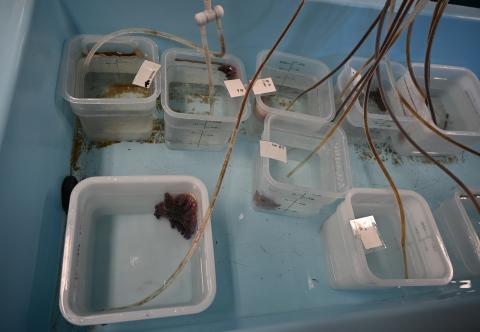
The Future
There are many challenges raising sunflower stars. Can the project be scaled up? To answer that the Sunflower Lab is trying to conduct mesocosm experiments, a model of an actual kelp forest. How many sunflower stars need to be in an area to keep the kelp forest healthy? Where to put them? At what size? The lab would have to grow prey for the sea stars: millions of sea urchins. The lab needs to grow kelp and then settle juvenile urchins (30 days to settle) on it. And, are there other prey items they should grow?
The Sunflower Lab team has collaborated with their partners to develop and test eDNA (Environmental DNA) tools to help detect sunflower stars in their natural habitat. And they’re working to develop new protocols for thawing and then settling frozen sea star larvae.
Since the Vibrio bacteria is in the ocean, researchers are also exploring whether sunflower stars can be selectively bred to reduce or eliminate their susceptibility to V. pectenicida—or if it’s possible in some way to inoculate them against the pathogen.
It’s a long way to recovery but researchers are hopeful now that work has begun. And there are some places where sunflower stars survived their pandemic, providing a glimmer of hope.
